Working Again
I don't know about you but making art has been a challenge for the past couple of months. However, I am working again and it feels very good.
Let's see: I'm not telling you anything you don't already know but Caronavirus 19 has killed almost 91,000 people in the US alone. Staggering.
On a more personal note, my older sister died in February, just before all this took place. Looking back at her death it seems like a kindness she went when she did. My daughter, granddaughter, two dogs, and I have left our two apartments and are now living together in a new home in Acton, MA; me in an apartment over the garage and them in the main house across an atrium. Moving during this pandemic has been difficult but we are healthy and happy with a large backyard, spring is sprouting up all around us, there are many boxes to unpack, yard work to do, lawn to mow, on and on.
I wrote earlier about the Mannequins work, here. Back when things were moving faster and I had much to do, the Mannequin pictures got left behind, as shows loomed and a new book was in design. But since my forced "retirement" the past two months, it is this work that has been on my mind. So, for no reason other than needing to get work printed and seen, I have been working on the Mannequin project.


Let me state at the outset, that all the old rules no longer apply. I'll explain. I was taught that there were protocols and systems for the presentation of photographs as art. This was art at the highest of levels, to be shown and collected in the best museums. Work that raised the level of consciousness of the medium of photography to new heights. Stieglitz, Walker Evans, Bernice Abbott, Robert Frank, Diane Arbus, Friedlander and Winogrand, Atget, Cartier-Bresson, Callahan Siskind, to name a few. Usually, a small photograph, most often in black and white, mounted on museum board with an over matt in a simple black frame or stacked in a portfolio. But with digital tools coming online earlier this century all this started to break down. 43 inch print with white surround and pink background? Sure, easy. An image as a poster?

Those old rules were valid at a time when photography itself still was relatively new, discoveries in photographic imagery were frequent and exciting. Now we have far more maturity, there is really little that presents as "never seen before". Yes, even true when digital is added in. So, therefore freedoms unheard of just a few years ago are prevalent now. As they should be.
The two mannequin pictures above are now being mounted and will hang on either side of a large TV in my new place. What a pleasure. A new place to live and a blank slate for an artist to make and show his art. All while social distancing and trying his damndest not to get sick.

BTW: I will be speaking this Thursday, May 21at 5 pm about my Monsters work for the Gallery Upstairs, sponsored by Bob Korn Imaging on the Cape.
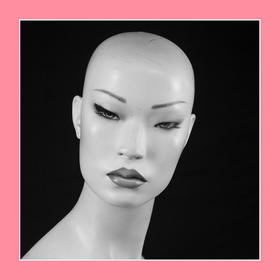
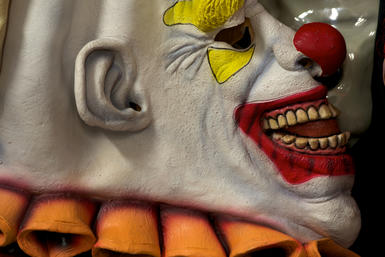
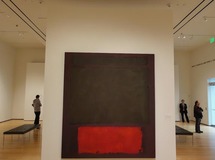
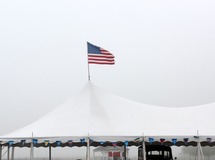
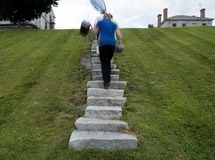
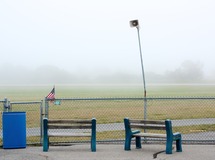
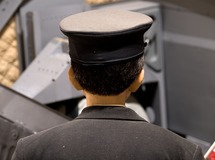
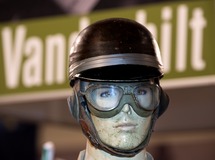


 When both ways of shooting here are considered, the aerials and then these from the ground, do you think this was effort to encompass the landscape I was shooting in a totality of coverage? To get at it in every way from every angle and every manner?
When both ways of shooting here are considered, the aerials and then these from the ground, do you think this was effort to encompass the landscape I was shooting in a totality of coverage? To get at it in every way from every angle and every manner?
 Not so much. It was an effort on my part to imbue the pictures made of the area with specificity of intent, to work with the location to mold it into what I wanted it to look like. Think for a moment about the staggering limitations of working within the idiom of landscape photography. There is tremendous history, lineage and countless careers built upon it. How does one extend the landscape rendered in photographs, move it and progress it while keeping it recognizable?
Not so much. It was an effort on my part to imbue the pictures made of the area with specificity of intent, to work with the location to mold it into what I wanted it to look like. Think for a moment about the staggering limitations of working within the idiom of landscape photography. There is tremendous history, lineage and countless careers built upon it. How does one extend the landscape rendered in photographs, move it and progress it while keeping it recognizable?
 The two above are just focus shift comparisons, perhaps difficult to see on a small display but of large importance when you see the prints which are 22 inches across.
The two above are just focus shift comparisons, perhaps difficult to see on a small display but of large importance when you see the prints which are 22 inches across.




 So, does it work? Have I made pictures that convey something moodier and perhaps darker here, and has that effect been brought to the forefront more due to the aerials provided as a reference? Does this way of working make sense to you? And finally, will I do this in the future: make series pictures in this new comparative way? Can't say for sure, but probably. Wouldn't you?
So, does it work? Have I made pictures that convey something moodier and perhaps darker here, and has that effect been brought to the forefront more due to the aerials provided as a reference? Does this way of working make sense to you? And finally, will I do this in the future: make series pictures in this new comparative way? Can't say for sure, but probably. Wouldn't you? This big curve in the road is where the road has come out near the ocean from the interior of the island and parallels the shore. The area I was interested in starts here.
This big curve in the road is where the road has come out near the ocean from the interior of the island and parallels the shore. The area I was interested in starts here.
 This is the south facing shore of the island with prevailing winds that are brutal in the winter so nothing can grow very high here.
This is the south facing shore of the island with prevailing winds that are brutal in the winter so nothing can grow very high here. 

 Although you can't park anywhere alongside the road and there is no access allowed with no trespassing signs, there are well worn sandy trails from the road down to the beach.
Although you can't park anywhere alongside the road and there is no access allowed with no trespassing signs, there are well worn sandy trails from the road down to the beach. In the image above you can see the the Moshup Trail road along the top of the frame.
In the image above you can see the the Moshup Trail road along the top of the frame.  Okay, so that gives you the way the area looks. I made these pictures before I started making the pictures from the same area on the ground.
Okay, so that gives you the way the area looks. I made these pictures before I started making the pictures from the same area on the ground. This plaque sits along the Moshup Trail road at the curve. Here's a blow up of the plaque:
This plaque sits along the Moshup Trail road at the curve. Here's a blow up of the plaque: This simply states that the area is preserved as conservation lands, meaning nothing can be built on it.
This simply states that the area is preserved as conservation lands, meaning nothing can be built on it. Hopefully I've set this up to show you how the area looks from above as a kind of survey or a map. In the next post I will show you work I made when photographing along the same stretch of maybe a couple of miles of road while on the ground.
Hopefully I've set this up to show you how the area looks from above as a kind of survey or a map. In the next post I will show you work I made when photographing along the same stretch of maybe a couple of miles of road while on the ground.